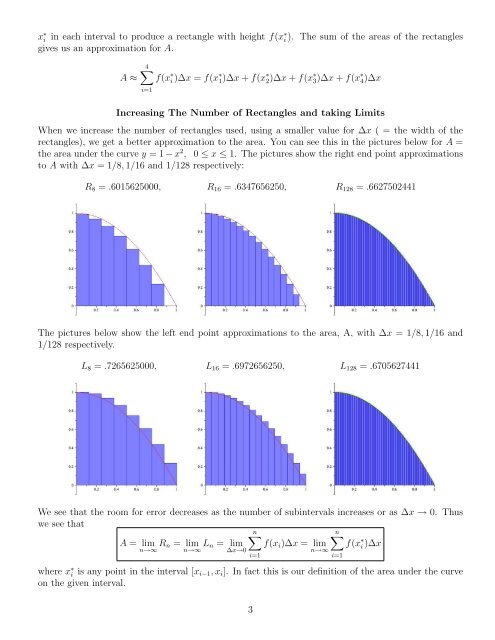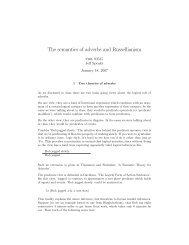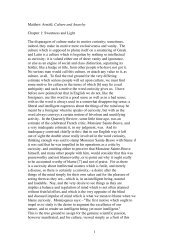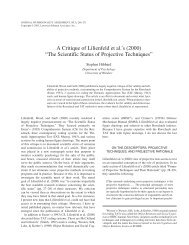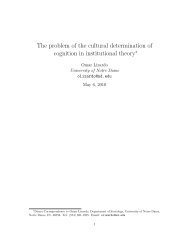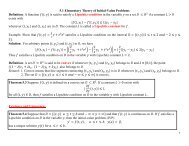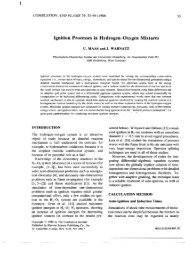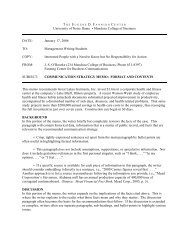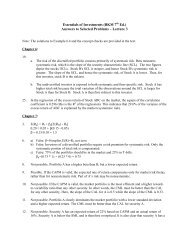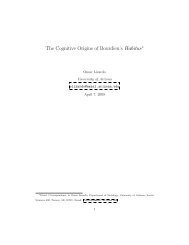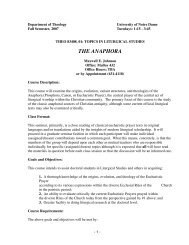Left endpoint approximation
Left endpoint approximation
Left endpoint approximation
You also want an ePaper? Increase the reach of your titles
YUMPU automatically turns print PDFs into web optimized ePapers that Google loves.
x ∗ i in each interval to produce a rectangle with height f(x ∗ i ). The sum of the areas of the rectangles<br />
gives us an <strong>approximation</strong> for A.<br />
A ≈<br />
4<br />
i=1<br />
f(x ∗ i )∆x = f(x ∗ 1)∆x + f(x ∗ 2)∆x + f(x ∗ 3)∆x + f(x ∗ 4)∆x<br />
Increasing The Number of Rectangles and taking Limits<br />
When we increase the number of rectangles used, using a smaller value for ∆x ( = the width of the<br />
rectangles), we get a better <strong>approximation</strong> to the area. You can see this in the pictures below for A =<br />
the area under the curve y = 1 − x 2 , 0 ≤ x ≤ 1. The pictures show the right end point <strong>approximation</strong>s<br />
to A with ∆x = 1/8, 1/16 and 1/128 respectively:<br />
R8 = .6015625000, R16 = .6347656250, R128 = .6627502441<br />
The pictures below show the left end point <strong>approximation</strong>s to the area, A, with ∆x = 1/8, 1/16 and<br />
1/128 respectively.<br />
L8 = .7265625000, L16 = .6972656250, L128 = .6705627441<br />
We see that the room for error decreases as the number of subintervals increases or as ∆x → 0. Thus<br />
we see that<br />
n<br />
n<br />
f(xi)∆x = lim f(x<br />
n→∞<br />
∗ i )∆x<br />
A = lim<br />
n→∞ Rn = lim<br />
n→∞ Ln = lim<br />
∆x→0<br />
i=1<br />
where x ∗ i is any point in the interval [xi−1, xi]. In fact this is our definition of the area under the curve<br />
on the given interval.<br />
3<br />
i=1


